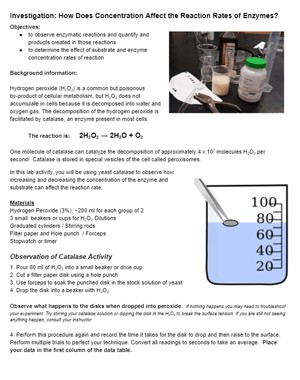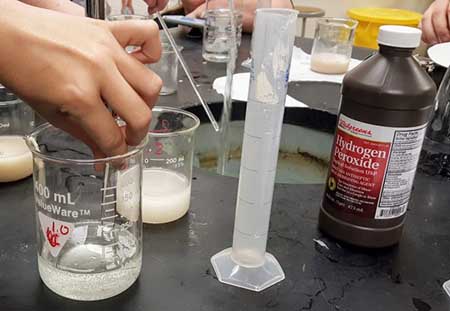
Students who complete the Enzyme Investigation lab can further explore enzymes with this lab on how concentrations of the substrate (hydrogen peroxide) and the enzyme ( catalase) can affect the rate of reaction.
In the first experiment, students simply made a judgement about the amount of bubbling to indicate reaction speed, though this is a crude measure.
As an extension, students can refine this technique using a floating disk procedure. Create a stock solution of yeast (approximately 2 grams in 100 ml of water) to show how you can dip a filter paper disk in the yeast solution and then drop it into hydrogen peroxide.
The disk will briefly sink and then float to the surface. You can then time how long it takes to get to the surface as a measure of the reaction rate.
Students will then adjust the concentration of the hydrogen peroxide by adding water and discover that the disks take longer to float. The same effect occurs when the concentration of the yeast solution is decreased.
Guiding Question: How does increasing the concentration of the substrate or the enzyme affect the reaction rate?
2H2O2 → 2H2O + O2

This lab can be converted to an inquiry lab easily by not giving students the step-by-step instructions, but instead asking them to develop their own experiments. Basically, you would show them the floating disc technique as a measure of reaction rate and then they would develop the procedure.
Time Required: 45-60 minutes
Grade Level: 11-12
HS-LS1-2 Develop and use a model to illustrate the hierarchical organization of interacting systems that provide specific functions within multicellular organisms
Science Practices: 1. Asking questions (for science) 2. Developing and using models 3. Planning and carrying out investigations 4. Analyzing and interpreting data

